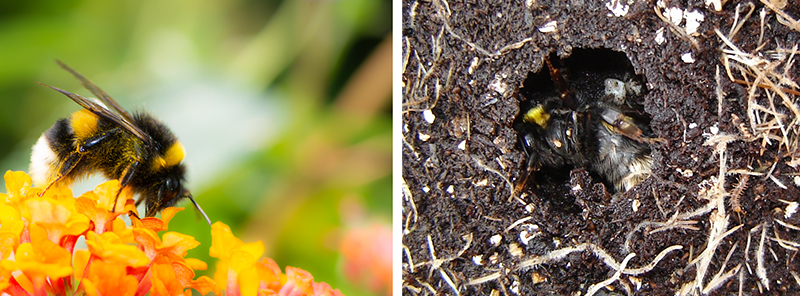Bzzz! Earth Rangers! To Bee or not to Bee? That is the question for today’s episode. When Emma finds a royal visitor slumbering in a flower pot on her balcony, she decides to find out more about our favourite pollinating friends.
Click the play button on the player below to listen to today’s episode!
Here is an active bumblebee during the summer (left), but during the winter bumblebees hibernate (right). Emma will tell you why bees are so important and what to do if you find hibernating bumblebees in your back yard.

Then Emma talks to Kylie McGregor from Nature Conservancy Canada, who helps protect the open spaces in Saskatchewan that bumblebees really need for their habitat.


It’s chemistry time again! Emma talks to real-life environmental chemist Professor Hind Al-Abadleh from Wilfrid Laurier University Waterloo, about how we use chemistry in order to reduce air pollution and help fighting climate change.

Have you ever found a hibernating bumblebee? What do you think about environmental chemistry?
Share your thoughts in the comments below!


Hi
Bee
I like this app
Who likes this app
Hi everyone
I think it is not a caterpillar…MAYBE it is a bee
i think it is a bee
and I love earth rangers too
Me to
Bee